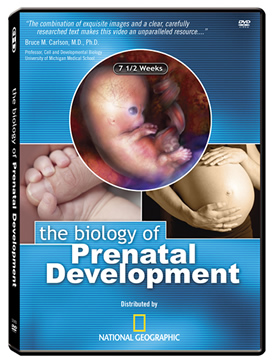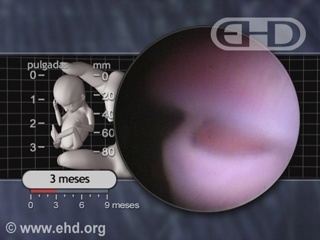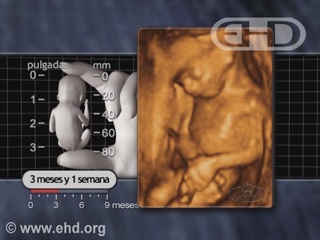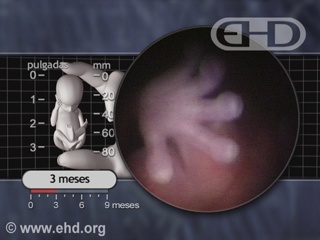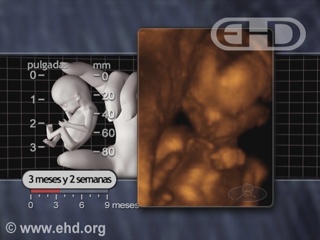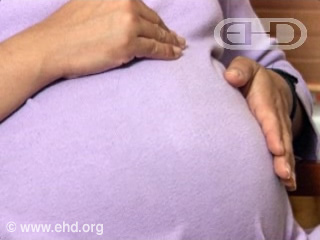DVD ilustrado plurilingüe
La biología del desarrollo prenatal
THE BIOLOGY OF PRENATAL DEVELOPMENT
English
Descargar versión en formato PDF ¿Qué es PDF?
Tabla de Contenidos
- El período embrionario (Las primeras 8 semanas)
-
- Desarrollo embrionario: Las primeras 4 semanas
-
- Capítulo 3 – Fecundación
- Capítulo 4 – ADN, división celular y factor temprano de embarazo
- Capítulo 5 – Etapas iniciales (mórula y blastocito) y células madre
- Capítulo 6 – 1 a 1½ semanas: implantación y gonadotropina coriónica humana (GCH)
- Capítulo 7 – La placenta y el cordón umbilical
- Capítulo 8 – Nutrición y protección
- Capítulo 9 – 2 a 4 semanas: capas germinales y formación de órganos
- Capítulo 10 – 3 a 4 semanas: el plegamiento del embrión
- Desarrollo embrionario: 4 a 6 semanas
-
- Capítulo 11 – 4 semanas: líquido amniótico
- Capítulo 12 – El corazón en acción
- Capítulo 13 – Crecimiento del cerebro
- Capítulo 14 – Esbozos de las extremidades y piel
- Capítulo 15 – 5 semanas: hemisferios cerebrales
- Capítulo 16 – Vías respiratorias principales
- Capítulo 17 – Hígado y riñones
- Capítulo 18 – Saco vitelino y células germinales
- Capítulo 19 – Placas de las manos y cartílago
- Desarrollo embrionario: 6 a 8 semanas
-
- Capítulo 20 – 6 semanas: movimiento y sensación
- Capítulo 21 – Formación del oído externo y los glóbulos
- Capítulo 22 – Diafragma e intestinos
- Capítulo 23 – Placas de las manos y ondas cerebrales
- Capítulo 24 – Formación del pezón
- Capítulo 25 – Desarrollo de las extremidades
- Capítulo 26 – 7 semanas: hipo y reflejo de sobresalto
- Capítulo 27 – El corazón en maduración
- Capítulo 28 – Ovarios y ojos
- Capítulo 29 – Dedos de las manos y de los pies
- El embrión de 8 semanas
- El período fetal (8 semanas hasta el nacimiento)
-
- Capítulo 37 – 9 semanas: deglute, suspira y se despereza
- Capítulo 38 – 10 semanas: pone lo ojos en blanco y bosteza, aparecen las uñas y huellas digitales
- Capítulo 39 – 11 semanas: absorbe glucosa y agua
- Capítulo 40 – 3 a 4 meses (12 a 16 semanas): papilas gustativas, movimientos mandibulares, reflejo perioral, primeros movimientos
- Capítulo 41 – 4 a 5 meses (16 a 20 semanas): respuesta al estrés, vérnix caseoso, ritmos circadianos
- Capítulo 42 – 5 a 6 meses (20 a 24 semanas): responde al sonido; cabello y piel; edad de viabilidad
- Capítulo 43 – 6 a 7 meses (24 a 28 semanas): reflejo de parpadeo; las pupilas responden a la luz; olfato y gusto
- Capítulo 44 – 7 a 8 meses (28 a 32 semanas): discriminación de sonidos, estados de comportamiento
- Capítulo 45 – 8 a 9 meses (32 a 36 semanas): formación de alvéolos, agarre firme, preferencias de sabor
- Capítulo 46 – 9 meses hasta el nacimiento (36 semanas hasta el nacimiento)

